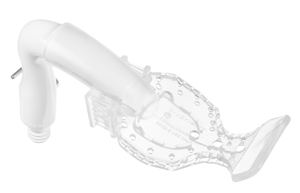By Laura Thill
Growing a business is never easy. But, with the right approach and the right people in place, dentists can do so successfully.
There is a model for every dentist looking to grow or expand his or her business, according to Rhonda Mullins, an independent dental practice strategist. The greatest challenge, she points out, is knowing what model to follow, why to follow it and when the time is right to make a move. Efficiency in Group Practice recently spoke with Mullins regarding what does – and does not – work with regard to expansion in the dental marketplace.
Efficiency in Group Practice: What are the greatest challenges dental group practices face with regard to growth and expansion?
Rhonda Mullins: The greatest challenge is knowing why, when and what model to [lean] on for greater leverage to advance, improve or change, [while] keeping a vertical thinking mindset before the decision-makers in the company. The plan to scale for growth and expansion is vital to the sustainability [of the business] through the expansion, whether that be organic or through multiple acquisitions. Every move has to add to the core of the service delivery innovation, which is the gap between best practice and patient care delivery.
EGP: What are some common mistakes group practices make when trying to address the above challenges?
Mullins: Common mistakes are [depending] on the wrong people, [creating] an unsustainable foundation, and [relying on] systems that don’t penetrate the soul of the practice. Another common mistake is trying to scale before the business is ready to do so.
EGP: Is growth always the answer for dental group practices?
Mullins: No, bigger is not always better. Efficiency is more important. Lower risk [is more important than attaining] bigger margins of profit.
EGP: Is it ever better for a group practice to maintain the status quo rather than focus on growth?
Mullins: Yes, the barometer for growth will always be patient demand and patient needs. In some parts of the country, a collaborative group practice model better meets the needs of patients than a monopoly of practices.
EGP: How can dental group practices grow in a controlled manner?
Mullins: The group should define and assess its service delivery innovation process (e.g., the workforce, processes, venue and supporting technology) every 90 days for the first 12 months. In this way, the group will organically define its momentum and know whether to hold back or move forward by purchasing new practices or adding providers. The key is to be selective. When creating their business plans, dentists should know their model for acquisitions and adding providers. The focus should be on timing, location, dollar amount they are willing to invest, and the projected profitability for each of the candidates. The fundamentals of business include clear vision, practice systems and solution strategies, as well as consistent execution.
EGP: Is the first step toward growth the ability to assess the current status of the business?
Mullins: General practices should always begin by assessing their hygiene departments, including the number of chairs filled each day (the goal should be 100 percent), services provided, the percentage of re-care effectiveness (the retention goal should be 85-95 percent) and the efficiency of patient care delivery. Even more importantly, they should assess the hygiene department’s potential for generating additional income through an effective, comprehensive preventive program that includes periodontal care. The hygienist is the first associate in any practice to provide patient care, so it’s important to maximize the department’s potential before adding another dentist. Again, the practice’s patient capacity will organically command the decision-making process regarding how many hygiene days they need [to justify adding] dentists, work days, chairs, etc.
EGP: What tools do group practices require to accurately assess the current status of their business?
Mullins: The most important tool is the practice’s [office] management software, including registration, charting, and documentation [It’s important that everyone knows] where and how to document, and that they do it the same way, no matter what chair the patient sits in. Research by Thankam Thyvalikakath, DMD, The Center of Dental informatics at the University of Pennsylvania, shows the informatics challenges in dentistry as of 2012. Only 1 percent of all dental offices are completely digital, chartless and paperless in this country. This speaks very loudly as to what tools and training must be exercised in order for congruency and seamlessness to be the standard [across all offices]. Everyone must learn the supporting technology and, more importantly, it must be transferable when change occurs. The business outcome from the level of utilization of the management software can be a greater benefit when data is correct and properly analyzed, and an overall assessment is conducted every month for course correction on the business development for expansion and growth.
EGP: Once the group practice has performed an accurate self-assessment, what are some best practices group practices should follow to pursue growth?
Mullins: They should:
- Unify dental providers by sharing the vision and expectations.
- Purify the plan by presenting it in digestible chunks to facilitate incremental changes through an eight-step process framed and designed specifically for them.
- Identify solutions by creating departmental development focuses for accountability and momentum.
- Clarify leadership and establish accountability with leaders, including the administrator, dental assistants and hygienists.
- Get feedback weekly until change and collaboration closes the cracks in all areas, including those related to quality patient care and positive business results.
EGP: How can dental group practices achieve buy-in from all of their members and/or providers and staff with regard to goals, strategies, contracts, etc.?
Mullins: They can do so through small wins along the way. Members have to feel that they are appreciated and valued. When the dentists get out of the way and allow the members to develop themselves as professionals in their own right, the members will take the practice to the point of greater leverage for expansion. This really is the good will of a practice.
EGP: What are some key qualities dental group practices look for in their suppliers?
Mullins: With regard to large group practices, the hope is the opportunity to get a greater break in lowering their percentage of supply overhead, as well as to commit to long-term relationships for large capital/equipment purchases, knowing that growth and expansion will occur.
EGP: What is the biggest change we can expect to see in the dental industry in the next several years, and what will it mean for dental group practices?
Mullins: In the next 60 months, we will see more dentists or multiple dentists forming small partnerships and acquire more offices in order to house a job market for dentists coming out of school who are looking to be clinicians, not business managers. For the dentists who wear the entrepreneurial hat, this will be an opportunity.
Sidebar:
Common mistakes group practices make when addressing challenges
Depending on the wrong people,
Creating an unsustainable foundation
Relying on systems that don’t penetrate the soul of the practice.
Trying to scale before the business is ready to do so.
The barometer for growth
The barometer for growth will always be patient demand and patient needs.
The value of the hygienist
The hygienist is the first associate in any practice to provide patient care, so it’s important to maximize the department’s potential before adding another dentist. General practices should always begin by assessing their hygiene departments, including the number of chairs filled each day (the goal should be 100 percent), services provided, the percentage of re-care effectiveness (the retention goal should be 85-95 percent) and the efficiency of patient care delivery. Even more importantly, they should assess the hygiene department’s potential for generating additional income through an effective, comprehensive preventive program that includes periodontal care.
1 percent
Only 1 percent of all dental offices are completely digital, chartless and paperless in this country.





